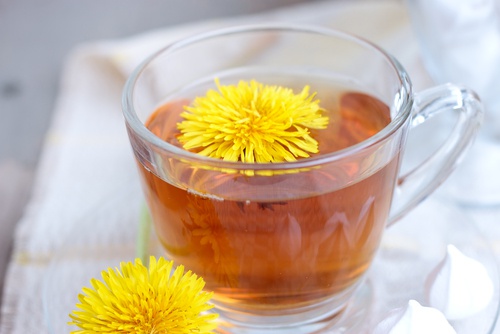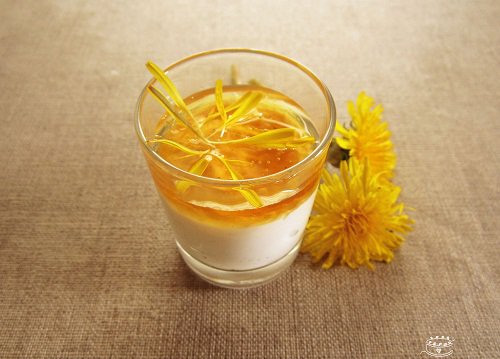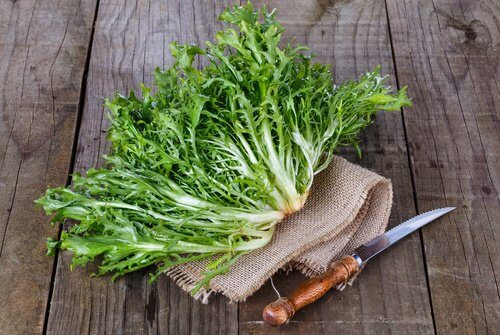Different Uses and Benefits of Dandelion

The bitter taste of dandelion leaves shows us that they are rich in phytonutrients and are very beneficial to the liver, which helps eliminate toxins. Its scientific name is Taraxacum Officinale Weber. What a sophisticated name for a wild plant! We find it throughout the Northern hemisphere, especially in Europe and America. In this article we’ll be looking at the many varied uses and benefits of dandelion.
Dandelion has jagged, hard and rough leaves, but is most famous for its flower, which is yellow and circular.
The flower has a flowery plume that people often blow on to make a wish. In nature the wind is responsible for scattering the seeds nearby. That’s why they so commonly grow and spread over long distances.

Dandelion contains the following nutrients:
- Carbohydrates
- Vitamin B
- Vitamin C
- Betacarotenes
- Potassium
- Flavonoids
- Oleic acid
- Linoleic acid
- Tanins
What parts of the dandelion can we eat?

Spring is the best time to collect the tender leaf shoots if you want to eat them fresh in a salad. You could also store them in a cloth sack to dry. People normally collect the roots at the end of the summer or in winter. You can store them in glass containers with a hermetically sealed lid.
The parts we can use include:
The leaves
They’re like spinach and we can eat them raw in salads, or cooked as a pie filling, for example. They taste fairly bitter once they reach a certain age, that’s why we advise eating the soft or small sprouts.
Some people also drink infusions prepared from dried leaves for medicinal reasons.
The flowers
Before they open, you can pickle them in salt and vinegar, as done with capers. They can then be fried or added fresh to salads.
The roots
Once the plant is two years or older (adult) you can begin to cut out part of the root. You can then toast it and use it as a caffeine substitute for making infusions.
The medicinal uses and benefits of dandelion

Diabetes remedy
One of the most common uses and benefits of dandelion is in treating diabetes. In Europe dandelion is frequently used by diabetics. The roots contain easily digested sugars.
Treat kidney and urinary problems
In France, this plant is often called “pissenlit” (which translates directly to “pee in bed”). This is because dandelion has been used for a long time to stimulate the kidneys.
It also helps to cleanse these organs, to treat urinary tract infections and to eliminate kidney stones. It is an excellent diuretic that does not cause potassium loss, as with most other diuretics.
Improves the digestive tract
It is a mild laxative, a bitter tonic, which stimulates appetite in patients recovering from illness. Because of this, it increases bile production and alleviates constipation and gastric disorders.
Eliminates toxins
Another one of the great uses and benefits of dandelion is for eliminating toxins that accumulate in the body. Consequently, it is related to good liver health. This herb is therefore used to treat hepatitis, jaundice and cancer or liver tumors.
It also has cleansing properties for the blood and can prevent chemical or food intoxication. It also cleanses the blood of fats (cholesterol) and uric acid.
Read more: 10 Home Remedies for Excess Uric Acid
It is a beauty tonic
This plant has been used for several years to treat eczema or psoriasis, among other skin conditions.
An infusion can be prepared from one handful of dandelion flowers in one cup of boiling water. Allow to cool and it will also be perfect for washing wounds (moisten a cotton ball in it and rub it over the affected area).
Treating anemia
Dandelion has a significant amount if iron in the leaves and can be used to prevent or reduce anemia. It also allows the body to recover after being iron deficient for a long time.
It is also great for pregnant women who develop anemia during gestation.
Helps with eye health
People that suffer from poor night vision or are likely to suffer from some sort of macular deformation can consume dandelion to add vitamin A, beta-carotenes, and helenin to their diets.
These 3 nutrients stimulate the eyes’ ability to capture light, and they protect vision.
Treat varicose veins and hemorrhoids
This benefit is due to the tannins in this plant. It provides relaxing and calming properties to alleviate external or peripheral circulatory problems, like varicose veins and hemorrhoids.
In these cases, it would be a good idea to take a seated bath with the liquid made from steeping one handful of dandelion leaves in water, or moistening a cotton ball in the tea and spreading it over the area.
Read more: 6 Ways to Cure Hemorrhoids Naturally
Side effects of dandelion

There generally aren’t very many adverse side effects to consuming this plant, excluding skin allergies or eczema. If you consume a lot of dandelion, you could experience diarrhea, heartburn, or stomach discomfort.
Fresh stalks could cause intoxication in children. It is not advisable to use dandelion tinctures during pregnancy or nursing due to its high alcohol levels. In this case, it’s best to consume a small portion of the plant either fresh, or dried.
All cited sources were thoroughly reviewed by our team to ensure their quality, reliability, currency, and validity. The bibliography of this article was considered reliable and of academic or scientific accuracy.
- Wirngo, F. E., Lambert, M. N., & Jeppesen, P. B. (2016). The physiological effects of dandelion (Taraxacum officinale) in type 2 diabetes. Review of Diabetic Studies. https://doi.org/10.1900/RDS.2016.13.113
- Al-Malki, A. L., Abo-Golayel, M. K., Abo-Elnaga, G., & Al-Beshri, H. (2013). Hepatoprotective effect of dandelion (Taraxacum officinale) against induced chronic liver cirrhosis. Journal of Medicinal Plants Research. https://doi.org/10.5897/jmpr12.1116
This text is provided for informational purposes only and does not replace consultation with a professional. If in doubt, consult your specialist.








